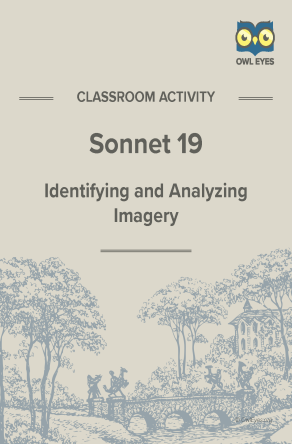Sonnet 19 Imagery Activity
- 8 pages
- Subject: Imagery, Literary Devices, Tone, Lesson Plans and Educational Resources
- Common Core Standards: RL.11-12.1, RL.11-12.4, RL.11-12.5, RL.9-10.1, RL.9-10.4
Product Description
In Sonnet 19, one of the 154 sonnets William Shakespeare penned in the 1590s, the speaker rages against “devouring time.” Indeed, time and mortality are the perhaps the central themes of Shakespeare’s sonnets, and nowhere does the bard so forcefully and vividly personify time than in Sonnet 19, in which time blunts “the Lion’s paws,” “pluck[s] the keen teeth from the fierce Tiger’s jaws,” and “burn[s] the long-lived Phoenix in her blood.” Shakespeare’s invigorating imagery brings an urgency to the speaker’s plight: he does not want time to take his beloved away from him.
Skills: analysis, drawing inferences from text, close reading, identifying the relationship between words
About This Document
The Owl Eyes Imagery activity gives students an opportunity to practice identifying and analyzing imagery. Imagery within a text creates a sensory experience that can connect readers to a text’s setting, atmosphere, or overall aesthetic. Studying imagery will help students understand how narrators or principal characters feel. The main components of this worksheet include the following:
- A brief introduction to the text
- A handout on types of imagery with examples from classic texts
- A step-by-step guide to activity procedure
- Selected examples of imagery from the text
In completing this worksheet, students will learn to identify and analyze different kinds of imagery in order to develop close reading skills and identify the effect imagery has on their reading experience.







